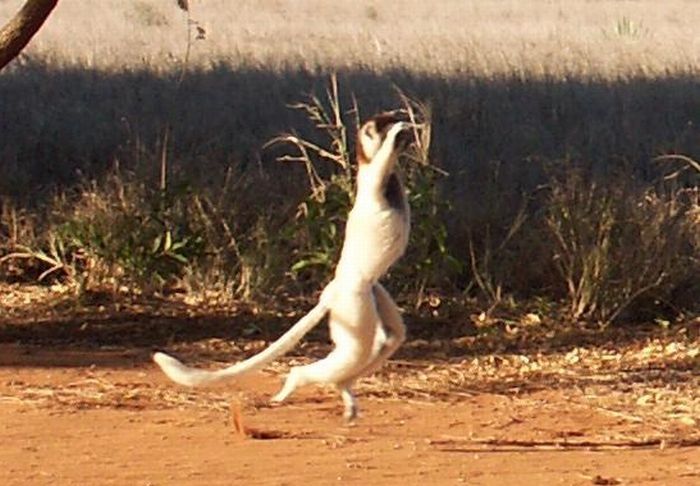|
|
Dancing Lemurs
|
Lemur taxonomy has changed significantly since the first taxonomic classification of lemurs by Carl Linnaeus in 1758. One of the greatest challenges has been the classification of the Aye-aye, which has been a topic of debate up until very recently. Until Richard Owen published a definitive anatomical study in 1866, early naturalists were uncertain whether the Aye-aye (genus Daubentonia) was a primate, rodent, or marsupial. However, the placement of the Aye-aye within the order Primates remained problematic until very recently. Based on its anatomy, researchers have found support for classifying the genus Daubentonia as a specialized indriid, a sister group to all strepsirrhines, and as an indeterminate taxon within the order Primates. Molecular tests have now shown Daubentoniidae is basal to all Lemuriformes, and in 2008, Russell Mittermeier, Colin Groves, and others ignored addressing higher-level taxonomy by defining lemurs as monophyletic and containing five living families, including Daubentoniidae.
Relationships among lemur families have also proven to be problematic and have yet to be definitively resolved. To further complicate the issue, several Paleogene fossil primates from outside Madagascar, such as Bugtilemur, have been classified as lemurs. However, scientific consensus does not accept these assignments based on genetic evidence, and therefore it is generally accepted that the Malagasy primates are monophyletic. Another area of contention is the relationship between the sportive lemurs and the extinct koala lemurs (Megaladapidae). Formerly grouped in the same family due to similarities in dentition, they are no longer considered to be closely related due to genetic studies.
More taxonomic changes have occurred at the genus level, although these revisions have proven more conclusive, often supported by genetic and molecular analysis. The most noticeable revisions included the gradual split of a broadly defined genus Lemur into separate genera for the Ring-tailed Lemur, ruffed lemurs, and brown lemurs due to a host of morphological differences.
Due to several taxonomic revisions by Russell Mittermeier, Colin Groves, and others, the number of recognized lemur species has grown from 33 species and subspecies in 1994 to approximately 100 in 2008. With continuing cytogenetic and molecular genetic research, as well as ongoing field studies, particularly with cryptic species such as mouse lemurs, the number of recognized lemur species is likely to keep growing. However, the rapid increase in the number of recognized species has had its critics among taxonomists and lemur researchers. Since classifications ultimately depend on the species concept used, conservationists often favor definitions that result in the splitting of genetically distinct populations into separate species to gain added environmental protection. Others favor a more thorough analysis.
|
|









